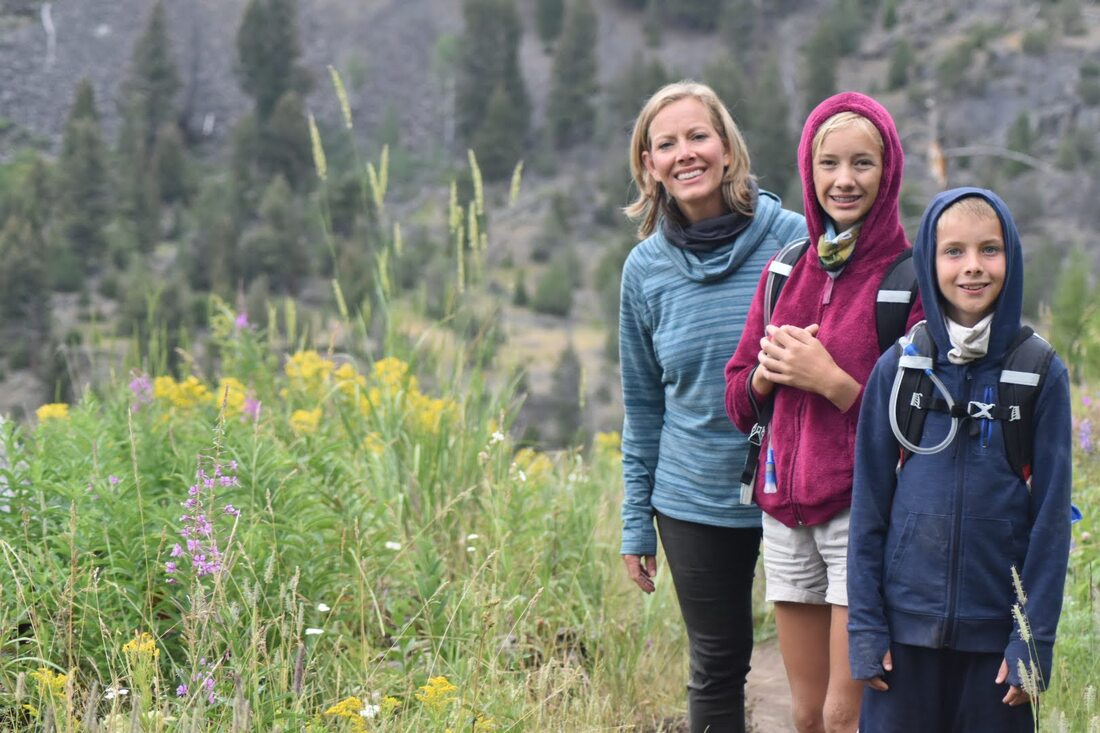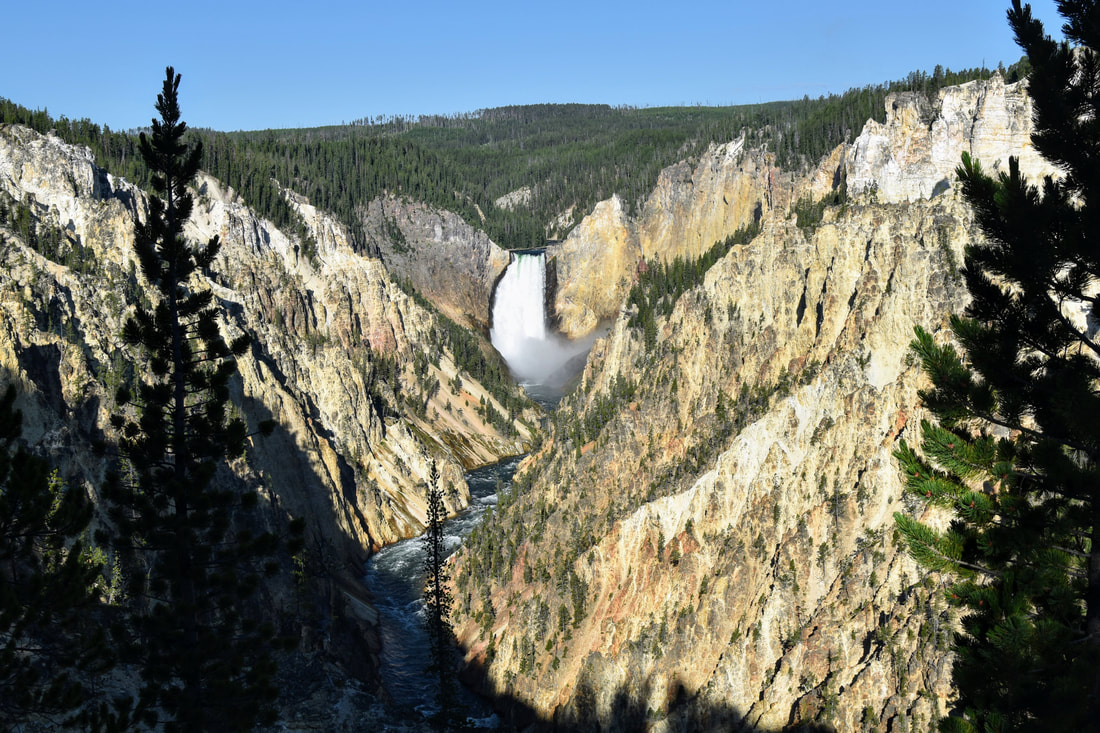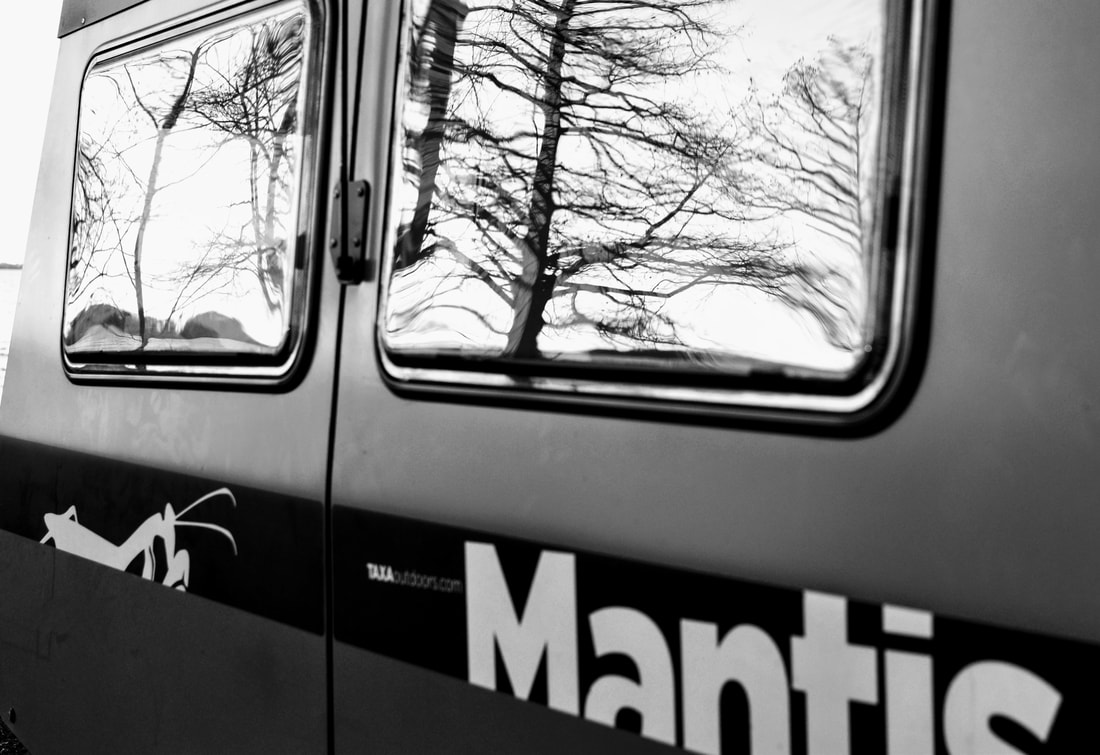|
Yellowstone. The first National Park in the world. Home to Old Faithful. It’s big and it’s far away. That was about all we knew about this classic road trip destination when we made reservations at the Yellowstone West Gate KOA. We were blown away by all things Yellowstone. We stayed at the Yellowstone Park West Gate KOA, which is six miles from the park entrance. We had a shady, full hook-up back-in site. We were busy in the park and didn’t take advantage of all of the amenities, but they were nice. The campground had an indoor pool and hot tub, playground, nice camp kitchen, coffee shop, a daily breakfast and BBQ dinner. We were able to spend six days at Yellowstone and trip planning for Yellowstone National Park is intimidating. Our favorite planning guides were Hike734.com to plan our hikes and Gypsy Guides to navigate us around the massive National Park. Our first day was a half day to give us a feel for the park. We collected a park map and newspaper and took in a brief taste of the area near West Yellowstone, the Madison and Norris regions to view rivers, waterfalls, and hydrothermal features. Stops included Madison River, Gibbons Falls, Beryl Spring, and Artist Paint Pot. These few stops served as a nice orientation tour. Our plan for our full days in the park was to get an early start each day, get a hike in early, sightsee, bring our own lunch and snacks to avoid searching for meals, and organize our visit by regions, traveling to our first destination first and working our way back though the afternoon The execution of our plan was good, but not perfect. We waited in line at the gates the morning we slept in. We ate out a couple times at quick service cafes, and we visited two and even three regions in the same day. Additionally, the road from Tower to Canyon was closed, making travel tricky and preventing us from visiting a stretch of the park. But overall our plan did help us stay on course. Some of our highlights of each region include: The Grand Basin We hiked Fairy Falls (6.5 miles) which offers the best view of the Grand Prismatic Spring from the overlook, hands down. If you have to decide between Fairy Falls and walking the Grand Prismatic boardwalks, choose Fairy Falls and wait until mid-morning to allow the fog to lift. We saw Old Faithful erupt a few times. The frequency and size is impressive, but this geyser isn’t the largest nor the only predictable geyser in the park. Yellowstone is home to 500 geysers, only a handful have a predicted eruption. This region of the park is covered in hydrothermal features: geysers, pools, springs, mud pots, and fumaroles. There are an estimated 10,000 hydrothermal features in the park, and are heavily concentrated in the Old Faithful, Norris, and Mammoth regions. The hydrothermal features are a full sensory experience, the aqua and yellow pools, heat from the geysers and fumaroles, scent of sulfur heavy in the air. The Old Faithful region of the park is not to be missed and will leave a lasting impression. Norris Geyser Basin The Norris region is the area between Old Faithful and Mammoth, and is a fan-favorite for geyser enthusiasts. To be honest, this region on the park was close to our homebase for the week and we almost skipped it. It was foggy in the mornings, crowded in the afternoons, and we'd already seen Old Faithful. But Norris Geyser Basin is a special experience. Over a couple mile boardwalk stroll, you experience some of the most impressive geyers anywhere. This region is home to Steamboat Geyser, the tallest active geyser in the world. The geyser enthusiasts take Steamboat and the Norris Basin seriously. They cover their cars in the parking lot in case the wind is blowing the eruption toward them. They settle in for the day at their geyser of choice and wait. Between Norris and Old Faithful are two sites we also enjoyed. The first is Firehole Canyon, which is a short detour drive past a waterfall and canyon, and is a nice wildlife spotting area. During a year that isn't disrupted with a global pandemic, you'll also find parking to swim in the Firehole River, one of two public swimming areas in the park. The second spot to see is the Firehole Lake drive, which take you past a couple geysers and hydrothermal lakes. We watched the sunset at Great Fountain Geyser, which was also expected to erupt that night. We didn't see the eruption, but we stayed late enough to see the stars and amazing views of the Milky Way, as well as clear views of the Neowise Comet, which happened to be in view during our trip. Mammoth Hot Springs As we drove to the Mammoth Hot Springs area, we approached a hike for Bunsen Peak. The Gypsy Guide said this was a nice hike if we had the time, billed as a moderate 4.3 mile out and back, we thought we should make the time. Bunsen Peak (4.3 miles) was a beautiful hike, but the two mile, 1300 foot gain, hike to the summit, kicked our butts. The view at the top was stunning and, had we been better prepared with more water, we would have loved to take the hike down the other side and around to our car. Regardless, the hike down was a breeze. Located north of Bunsen Peak and other peaks guarding the valley, we approached Mammoth. Mammoth Hot Springs looks like a scene from the ice ages. White blocks of mineral deposits look frozen with hot water flowing over them. The terraces of Hot Springs are easily accessed via a network of boardwalks. Just outside the park and a few miles north of Mammoth is the north entrance, the tourist town of Gardiner, and the historic north entrance that Theordore Roosevelt laid the cornerstone. We extended our day trip out of the park to see the historic entrance, found great ice cream at Scoop! There It Is, and did some shopping at Yellowstone Forever. Tower-Roosevelt Hellroaring Creek (4.4 miles) was our destination in the Tower-Roosevelt region. The stretch of the scenic loop from Tower-Roosevelt to Canyon was closed during our visit, so we started this region with a hike toward Hellroaring creek. We hiked down to the suspension bridge crossing the Yellowstone River, just over a two mile loop, instead of completing the full planned route. This was the day after our Bunsen Peak journey, and we had an afternoon hike planned, so we agreed cutting this hike short made sense. Nonetheless, the abbreviated hike was stunning. Wildflowers and grand vistas with the river lining the trail made for a beautiful walk. Lamar Valley We decided to spend the afternoon after Tower-Roosevelt in Lamar Valley as both regions were far from our home base of West Yellowstone. We almost talked ourselves out of Lamar Valley, but we are glad we didn't. Lamar Valley is a grand valley on the northeast side of the park and approaching the northeast entrance. The valley is home to great wildlife spotting and is likely the best chance of spotting wolves in the park. Although unsuccessful in spotting wolves, we did spot a lot of bison in this region. Trout Lake (1.2 miles) is a short trail up and around a fishing pond. A creek flows in one side of the pond and tumbles out as a small waterfall on the other. Another great hike past wildflowers and likely, but unsuccessful, spots to see the big mammals of the park. Canyon The Canyon region may have been the favorite of our family. To get orientated, there are three must-see overlooks to watch the once gentle flowing Yellowstone River near Yellowstone Lake now rapidly tumble down the falls and into the walls of the Yellowstone Grand Canyon. The views of the upper falls, lower falls, and the famous view at Artists Point are all highlights. We merged portions of the South Rim Trail (6.5 miles) and Clear Lake - Ribbon Lake Loop (6.1 miles) to make a seven mile hike to see the views of the falls, hike along the river, across a meadow with a bison nearby, past hydrothermal features, near a pond with an elk grazing, and through a forest. This hike was likely our favorite of the trip due to the diversity of wilderness and beauty, great enough that the kids didn't complain as much about the distance. Canyon Village was one of our break the rules day. We all agreed that Fresh Wok looked good, which it was. To continue on our break the rules day, we drove through Fishing Bridge and West Thumb, doing an advance visit to our next stops. Then we stopped at Old Faithful to see an eruption, where we also ate dinner, before going to a four region, Madison, to see the Grand Prismatic Spring again, watch the sunset, and stargaze. Our rule of one region and bringing our own fun is great, but breaking the rules and seeing a huge swath of the park in one day was also memorable. Fishing Bridge/Bridge Bay Fishing Bridge is about the point where Yellowstone Lake becomes Yellowstone River. As the name implies, this was once a very popular fishing spot, but fishing is now prohibited here and in many areas of the park. Fishing Bridge and Bridge Bay region is also described as an ideal grizzly environment. At one time the NPS attempted to move the campground away from here and to Grant Village at the south end of the lake to protect campers from the bears, or vice versa. Campers protested and the campground was reopened. We selected Storm Point Natural Trail (2.4 miles) to hike this stretch of the lake. The trail took us out and along the shore of the lake, to a high overlook, and back through a lodgepole pine forest on the return hike. Although we didn't encounter bears on the trail, we did see marmot playing on the rocks near the lake. Steamboat Point Picnic area provided a great backdrop for lunch, and the scenic drive south of Bay Bridge was a perfect place to find a quiet cove of the lake to relax. West Thumb/Grant Village
The final region we explored was West Thumb. The crown of West Thumb is West Thumb Geyser Basin. This geyser basin has even more unique hydrothermal features. One such is called fishing geyser, where fisherman once caught fish and dipped them directly into the geyser in the lake to steam the fish while still on the line. Again a network of boardwalks offered views of geysers and pools. Our favorite spot in this region was the rocky beach just behind the visitor center at Grant's Village. The lake here is quiet and calm, but still massive with distant mountains around it. This was a perfect place for us to take a break and reflect on the stunning destination that is Yellowstone National Park. After all of the adventures in Yellowstone, the dozens of miles hikes, hundreds of miles driven, and thousands of photos taken, our trip still had more to offer. Tomorrow morning we knew we were headed to Swan Valley, Idaho to visit Grand Teton National Park.
0 Comments
Your comment will be posted after it is approved.
Leave a Reply. |
AuthorsShane and Jessica Archives
March 2023
Cricket Camping is an Amazon Affiliate. From time to time, we may refer to a product we have purchased and provide a link to purchase the same product directly from Amazon. If you chose to purchase the product using our link, and based on our recommendation, Cricket Camping will earn a commission, which helps us continue sharing our experience through this website.
Thank you for your support. |












